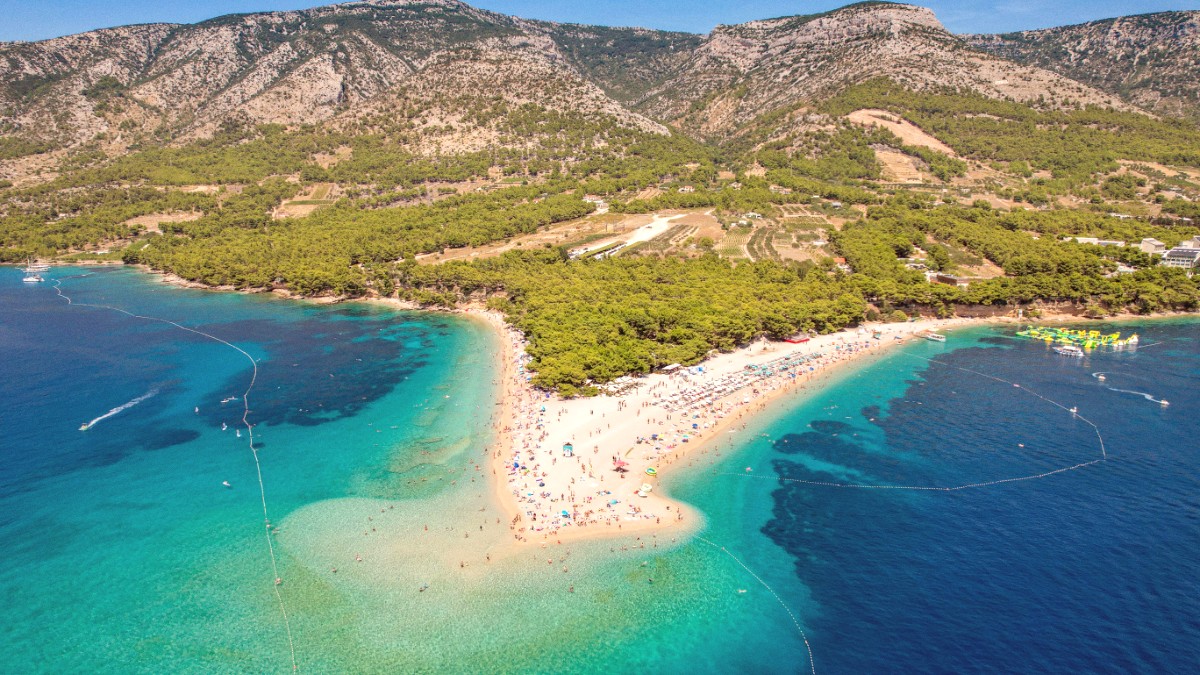
Croatia
Whether you seek adventure on the water, quiet moments by the sea, or a taste of local culture, Bol delivers. This guide navigates your visit, ensuring a satisfying exploration of this unique island destination.
Bol's history stretches back to ancient times. Evidence suggests Roman presence, and the area has seen various influences over centuries, from Venetian rule to Austrian administration.
The Dominican Monastery, established in the 15th century, is a testament to Bol's enduring spiritual and cultural heritage. The town developed as a fishing village and a center for winemaking and olive cultivation, traditions that continue today. Stone quarrying, specifically of the famous Brač white stone, played a significant part in the island's economic and architectural development.
Bol experiences a Mediterranean climate with hot, dry summers and mild, wet winters. Summer temperatures average 25°C to 30°C (77°F to 86°F), sometimes exceeding 35°C (95°F). Rainfall is rare, providing many sunny days. Sea temperatures are warm, ideal for swimming.
Autumn sees temperatures decrease, with increased rainfall. Winters are mild, between 5°C and 10°C (41°F to 50°F), and a higher chance of rain. Spring offers steadily rising temperatures and less precipitation, with sea temperatures suitable for swimming from late May.
Mid-June to mid-September. The sea is warmest and the weather is reliably sunny.
May, June, September. These months present stronger, more consistent winds.
April, May, early June, September, October. Temperatures are comfortable, and landscapes are beautiful.
Shoulder seasons (May-June, September-October) deliver pleasant weather and fewer crowds.
Low season (November - April) for an authentic glimpse of island life.
The Bura (northeasterly wind) brings cold, clear weather, notably in winter. It can be quite strong. The Jugo (southeasterly wind) brings warmer, humid, and rainy weather, more common in autumn and winter.
July and August see the island busy with energy. This is a time for lively beaches and social evenings. Expect high prices for accommodation and services. Popular attractions can be very busy.
May, June, September, and October offer pleasant temperatures and fewer crowds. Accommodation prices are lower. The sea remains warm enough for swimming, especially June and September.
November to April brings the lowest prices and very few tourists. This period delivers an authentic experience of local life and a mild winter climate. Many tourist businesses may close.
Bol is a very safe destination with a low crime rate. Petty crime, like pickpocketing, can occur in crowded tourist areas, especially during peak season. Maintain awareness of your belongings.
No specific neighborhoods in Bol are known for higher crime rates. Travelers should ensure routine vaccinations are current. Consult your doctor well before your trip for personalized health advice.
Summer sun is intense. Use high-SPF sunscreen, wear a wide-brimmed hat, seek shade, and stay hydrated.
Sea urchins may be present on rocky coastlines. Wear water shoes for protection when swimming or walking on pebble beaches.
Mosquitoes appear, especially in the evenings. Use insect repellent, specifically at dusk and dawn.
Bol has a local health clinic (Dom zdravlja Bol) for basic medical needs and emergencies. For serious medical emergencies, patients transfer to the larger hospital in Split on the mainland.